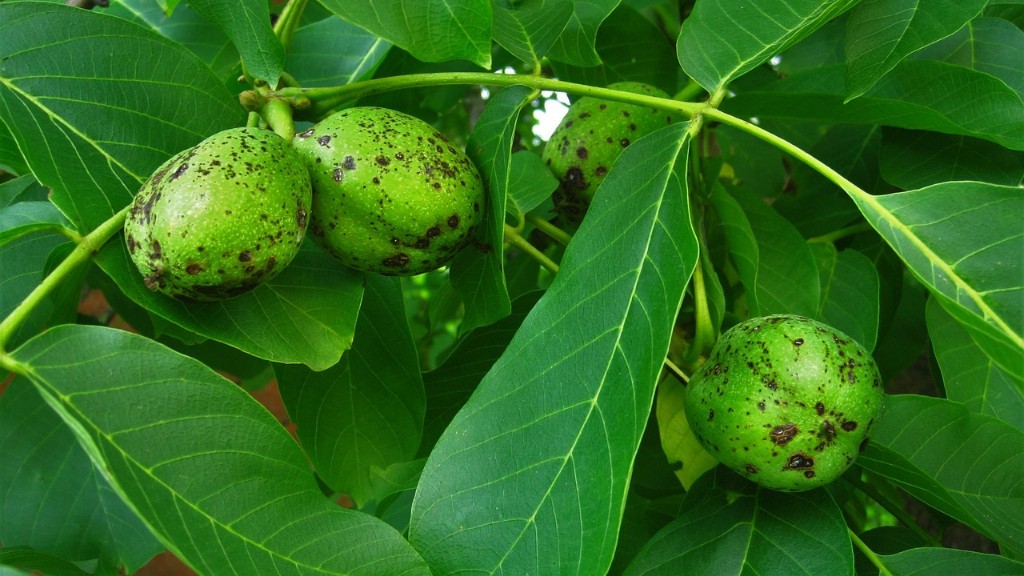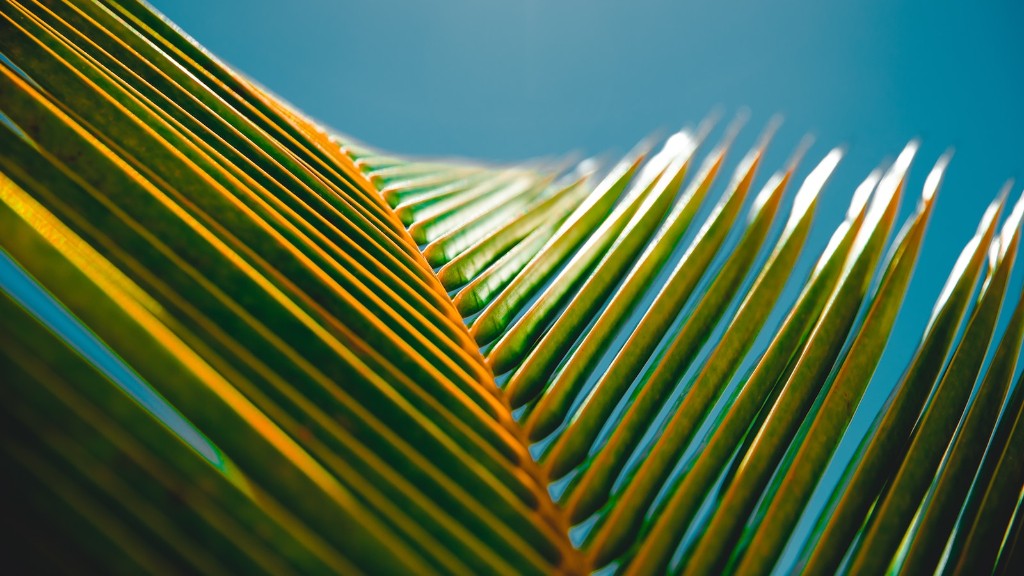How to store Apples from My Tree
When harvesting apples from my tree, proper storage techniques should be considered. Apples need to be stored in a cool and dry location to keep them from spoiling. Here are some tips on how to store apples from my tree to ensure that their quality is preserved.
First, it’s important to make sure the apples are free from dirt and debris. Apples should be gently washed with a warm damp cloth, or a solution of water and dish detergent, before being put away. Removing dirt and debris will help to prevent the growth of mold or mildew.
Next, sort the apples according to their maturity. Apples which are nearing maturity will need to be consumed first, as they will spoil more quickly. Meanwhile, apples that are not yet ripe should be kept separate, as they will last longer if left to ripen over time.
Third, ideal storage conditions for apples involve a cool environment. Apples should be stored at a temperature below 50 degrees Fahrenheit, and in an area with low humidity. Apples can also be refrigerated to slow down their ripening process.
Fourth, keep the apples away from sunlight. Sunlight can cause them to ripen quickly and can also damage their flavor. Therefore, apples should be placed in a dark, cool area away from heat and sunlight.
Fifth, an important factor in storing apples is how they are packaged. Plastic or paper bags can be used to store apples, but the air in the bag needs to be circulated regularly to prevent the apples from becoming too moist. Apples can also be stored in shallow plastic crates or wooden boxes, although cardboard can also be used as a last resort if no other container is available.
Finally, it’s important to check the apples periodically. Apples can easily go bad if they are not stored properly. Therefore, before consuming the apples, it’s important to inspect them for any signs of spoilage or damage and remove any apples that have gone bad.
How to Store Apples for Longer Periods
Storing apples from my tree for longer periods is a bit different than storing them in the short term. Apples stored for longer need to be kept in colder and moisture-free environment. Here are some tips to help keep apples from my tree for extended periods.
First, apples should be kept in a place that does not get direct sunlight or high temperature. Apples thrive in windowless, cool areas with temperatures between 30 to 45 degrees Fahrenheit and between 65 to 90% humidity. Basements, cellars and cold storage room are great places to store apples.
Second, whole apples can be kept longer, as they retain moisture in their interior. Apples can be laid out in a single layer in a cardboard box and the box should be placed in a cool area away from direct sunlight. Any apples that show signs of bruising or rot should be discarded immediately, as these can cause the entire box to rot.
Third, apples can also be stored as slices for a longer period. Apples can be sliced and put in a container or vacuum sealed bag and placed in the refrigerator. The apples will last for several weeks if stored properly in the refrigerator.
Fourth, apples can also be peeled and stored for an even longer period. Apples should be peeled and put in a container or vacuum sealed bag and placed in the freezer. They will last for several months and can be used in recipes when thawed.
Fifth, freezing apples is also a great option to store apples for longer. Apples can be frozen whole, sliced or peeled, and will last several months in the freezer. Apples can simply be put in a freezer bag and placed in the freezer. When thawed, apples should be used within a few days.
Finally, apples can also be stored as juice or cider. Apples can be juiced and the juice can be poured into a few containers or jars and placed into the refrigerator. The juice will last for several weeks if stored properly. Apples can also be pressed and the cider can be stored in the refrigerator for several months.
How to Store Apples for Winter
My tree can produce apples all year long and not just during the summer. Apples stored for winter should be kept in even cooler and drier environment, or else the apples will spoil before winter ends. Here are some tips for storing apples for winter.
First, choose apples that are firm and have a fresh, appealing color. Apples should also be free of bruises and blemishes. Apples that are not ripe when harvested will ripen more slowly in storage, making them ideal for longer-term storage.
Second, apples should be layered in shallow boxes and stored in a cool and dry area. Many cellars and basements offer ideal environments for apple storage. The apples in the box should be layered with straw or newspaper to increase the insulation.
Third, to avoid bruising, the apples should be handled gently and the box should be kept closed at all times. The box should also be checked periodically for any signs of rotting or damage, and any rotten apples should be removed from the box immediately.
Fourth, apples should be stored in a cool and dark area. Apples need to be stored in an area with temperatures between 30 to 45 degrees Fahrenheit, and in an area with 65 to 90% humidity. Sunlight can cause the apples to ripen too quickly and should be avoided.
Fifth, apples can be stored for up to six months, but it should be noted that different types of apples have different storage times. The storage time for each type of apple can be found online or in books.
Finally, apples that have been stored for longer periods should be consumed soon after they have been stored. Over time, the apples will lose their freshness, flavor and texture and should be used soon after coming out of storage.
How to Store Apples without Refrigeration
Often times it’s not possible to store apples in the refrigerator, so other options should be considered when it comes to storing apples. Here are some tips on how to store apples without refrigeration.
First, the apples should be stored in a cool and dark place, away from source of heat or sunlight. Whether stored in a basement or root cellar, apples should be stored in a temperature between 30 to 45 degrees Fahrenheit, and in an area with 65 to 90% humidity. The area should also be well-ventilated.
Second, apples should be stored in shallow wood or cardboard trays. Plastic or metal containers can also be used, although the apples should not come into contact with metal. The apples should be layered in the container and separated with paper or cardboard.
Third, the apples should be inspected regularly to check on any signs of rot or damage. If an apple shows signs of rot, it should be discarded immediately and the container should be checked for any other rotting apples.
Fourth, apples should be stored away from other fruits. Fruits like bananas and pears give off ethylene gas, which can cause the apples to ripen prematurely and spoil faster. Therefore, apples should be kept away from other fruits.
Fifth, adding some dry material such as newspaper or straw can help to increase insulation and keep apples from freezing in very cold temperatures. The material should be changed regularly to remove any moisture.
Finally, the apples should be kept away from any fruits or vegetables with strong odors. Foods with strong odors such as onions and garlic can cause the apples to absorb these odors and spoil faster.
How to Store Apples in the Freezer
Storing apples in the freezer is a great option to extend their shelf life. Apples stored in the freezer will last several months and will retain their flavor and texture when thawed. Here are some tips on how to store apples in the freezer.
First, apples should be ripe and firm when stored in the freezer. Apples that are not ripe should be eaten first, as they will not ripen in the freezer. Meanwhile, apples that are too ripe should be discarded, as they will become mushy when thawed.
Second, apples can be stored in the freezer either whole, sliced or peeled. Apples should be washed and patted dry with a paper towel before being frozen. Apples can be put into freezer bags and stored in the freezer.
Third, apples can also be mixed with other fruits or vegetables and frozen in a single container. The mixture should be monitored closely as some fruits and vegetables will not thaw out properly due to different water content. Apples should also not be stored with foods with strong odors, as they will absorb the odor in the freezer.
Fourth, apples can also be used in recipes that require frozen apples. For example, apples can be diced and frozen for use in pies, cakes, muffins and other baked goods. Apples can also be used for smoothies or applesauce.
Fifth, to use frozen apples in recipes, thaw them out in the refrigerator and use within a few days. Apples that have been frozen for a long time may lose some flavor and texture, and should be used in recipes that will not be adversely affected.
Finally, it’s important to properly label and date each container of frozen apples. This will help to keep track of when the apples were stored and when they should be consumed.



